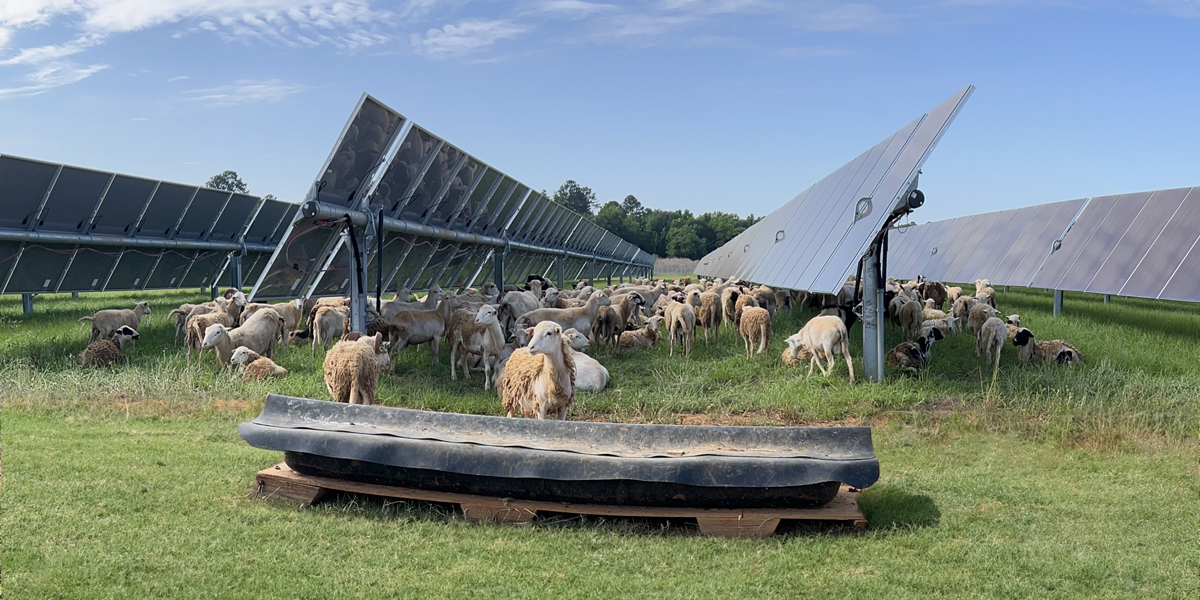Members of our team recently attended the Center for Agricultural Resilience’s first-ever Solar Grazing Workshop. Team members had a three-day long stay at White Oak Pastures, a six-generation, 156-year-old family farm run by Will Harris and his two daughters, in Bluffton, Georgia. Will and his team take great pride in practices that focus on regenerative land management, humane animal husbandry and revitalizing their local community.
Over 25 years ago, Will changed from traditional industrial farming practices to regenerative grazing, and in 2021, he founded the Center for Agricultural Resilience (CFAR). Their mission is to “inspire a rethinking of the system by demonstrating what has been accomplished and scale don a working farm, on a realistic budget, by real-world business people.”
Some Conference Highlights:
-
Panel discussions with industry leaders in regenerative agriculture, owner/operators of solar facilities, and solar grazers.
-
Hands-on visit to two solar farms, each with different designs, to learn more about the varying challenges and benefits of each.
-
An interactive demonstration of how to perform a rotational grazing field move with the White Oak Pastures’ flock of sheep.
-
A presentation on capital expenditures and resources for solar grazers, and the pros and cons of each type.
-
Panel discussions about the expectations for solar grazing and the benefits of agrovoltaics.
-
Overall discussions and demonstrations of how sensitive solar equipment is protected from grazing animals.
Some Key Takeaways:
The event was insightful and beneficial to our team, as we were able to gain greater insight into the bidding, contracting, and execution phases of solar grazing. Some other key takeaways included:
-
There are numerous benefits to having sheep graze, rather than mowers, including zero carbon emissions, long-term sheep are better for the soil, fewer accidents with sheep, and overall easier to maintain.
-
For the most effective agrovoltaics, developers should try to plan for the grazing before starting construction. This includes spacing of solar panels, placement of inverters and substations, and planting good cover crops before starting full construction and managing wetland areas.
-
Sheep can mow under solar panels more effectively than a human.
-
Water is needed onsite, which can be challenging and sometimes water needs to be trucked in.
-
Sheep prefer shade which can be difficult on a large solar array, and dogs are needed to protect the herd.

